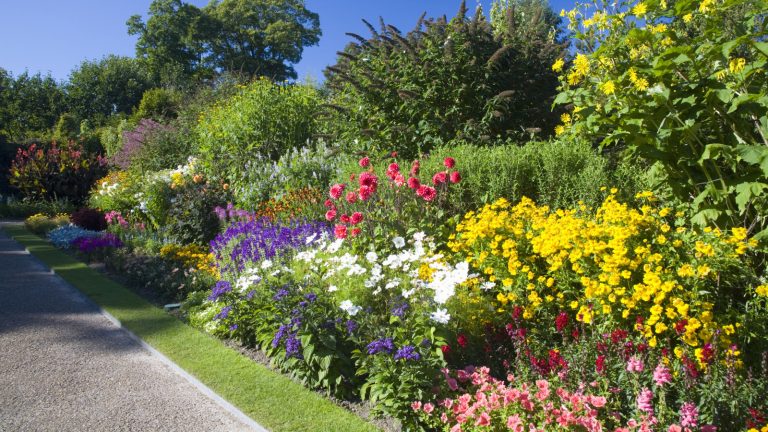
If you’ve come across the xeriscaping trend and are considering it to make your garden more drought-resistant, you might be eager to give it a try. This landscaping approach focuses on conserving water while maintaining the visual appeal of your yard. When executed properly, it can significantly reduce or even eliminate the need for irrigation. Xeriscaped gardens are not only low maintenance but also environmentally friendly, enhancing your home’s curb appeal simultaneously.
However, before you begin xeriscaping your front lawn, it’s vital to comprehend the potential drawbacks and risks associated with this landscaping technique. Without proper planning and design, xeriscaping might exacerbate erosion, pollute waterways, remove wildlife habitats, and create heat islands. For gardeners keen on xeriscaping as a climate-conscious gardening method, making errors that fail to enhance or even worsen your lawn’s environmental impact can be quite disheartening.
If your aim is to transform your lawn into a low-maintenance and eco-friendly landscape, it’s crucial to adapt xeriscaping techniques to suit your local climate and the specific conditions of your yard. This begins with understanding the key disadvantages of xeriscaping and the principles of crafting a water-efficient landscape that aligns with your environment.
The disadvantages of xeriscaping your front lawn
Xeriscaping can offer numerous benefits when implemented correctly, but many gardeners mistakenly model their water-efficient landscapes on the rock and cactus gardens prevalent in the arid western regions where xeriscaping originated. A desert-style garden is appropriate only if it mirrors your local ecosystem. In more humid climates, especially if your yard has drainage issues, the most water-efficient landscape might resemble a lush meadow rather than a desert.
Even if you reside in an area where the dry-climate form of xeriscaping is more applicable, the techniques you employ could potentially cause more harm than good. One major design flaw is over-relying on hardscaping elements like rock beds, gravel, and patios. While removing vegetation to reduce your garden’s water needs might decrease irrigation, the environmental damage can sometimes outweigh any benefits gained from reduced water consumption.
With less vegetative cover, exposed soil becomes susceptible to erosion. Additionally, reduced water absorption into the soil during rainfall can intensify runoff, carrying nitrates and other pollutants from your yard. Furthermore, decreasing vegetation can lead to a heat island effect, increasing temperatures around your home and necessitating more air conditioning to keep your house cool. Although replacing turf with rocks might lower your water bill, your energy expenses could rise significantly.
Tips for xeriscaping the right way
Xeriscaping is centered around water-efficient landscaping. However, “water efficient” doesn’t solely mean selecting drought-resistant plants or replacing turf with rocks that don’t require irrigation. Depending on your yard’s conditions, a water-efficient design might involve a cluster of moisture-loving plants that absorb excess water in areas with poor drainage. It could also mean adding mulch to enhance moisture retention and regulate soil temperature around your plants, thereby reducing the need for irrigation.
The key to successful xeriscaping lies in assessing how water flows and is utilized in your yard, then tailoring a landscape design based on these patterns. Whenever possible, prioritize integrating well-adapted plants over merely covering challenging spots with rocks. While incorporating hardscaping elements like rock beds, pathways, or patios can enhance yard functionality and reduce irrigation needs, it’s essential to avoid excessive runoff or heat accumulation around your home.
Segment your yard into zones with similar light exposure, soil types, and drainage characteristics. Then, select native plants that are well-suited to each zone’s environment. Once established in their preferred conditions, native plants typically require minimal supplemental irrigation, fertilizers, or ongoing care. They also offer excellent habitats for local wildlife, including birds, pollinators, and other beneficial creatures.






